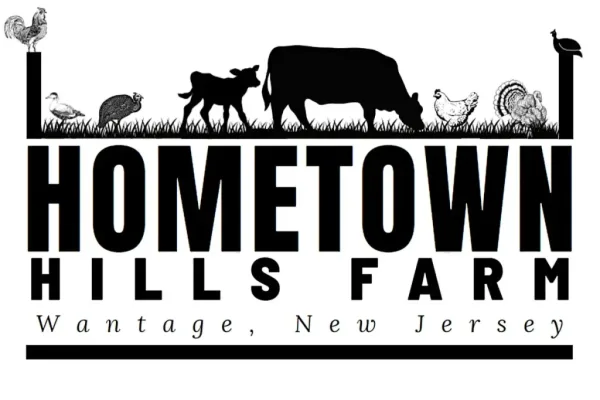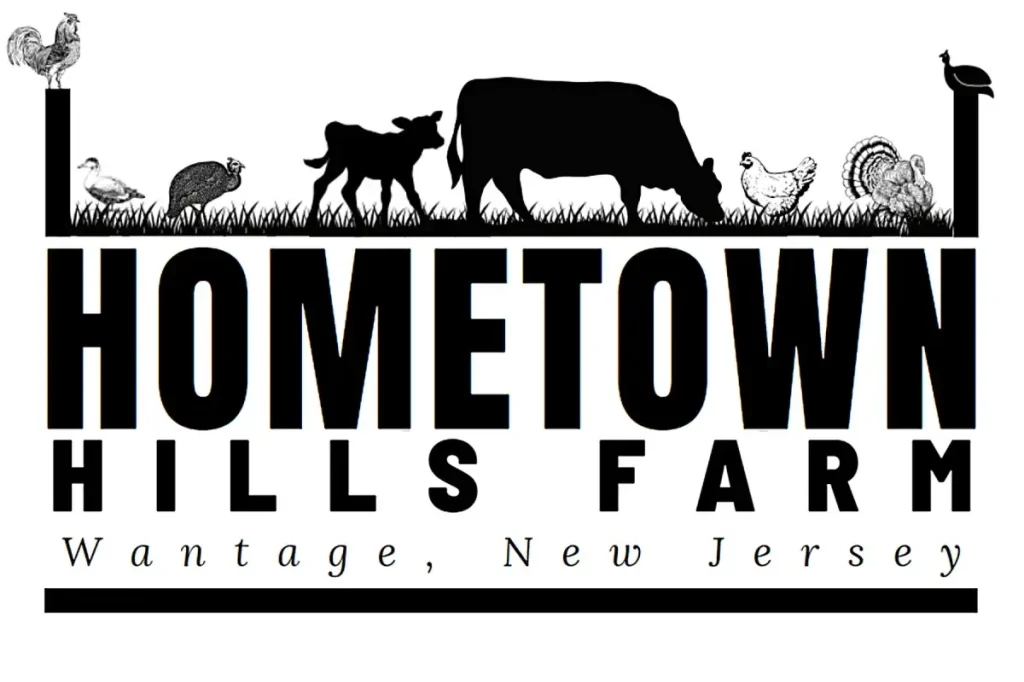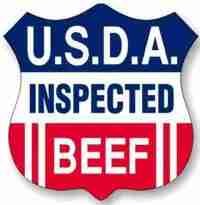Introduction to Grass-Fed Beef
Grass-fed beef has gained significant traction in recent years, especially among health-conscious consumers who are increasingly concerned about their dietary choices and the sources of their food. Unlike conventional beef, which is often produced in feedlots where cattle are primarily fed grains, grass-fed beef comes from cattle that are raised on a diet consisting mainly of grass and forage. This fundamental difference in diet influences not only the nutritional profile of the meat but also raises important questions about sustainability and animal welfare.
The rise in popularity of grass-fed beef can be attributed to several factors, including growing awareness of the health benefits associated with this type of meat. Studies indicate that grass-fed beef is generally lower in total fat, higher in omega-3 fatty acids, and enriched with antioxidants compared to its grain-fed counterpart. This nutritional edge appeals to those who prioritize healthier eating habits and are looking for options with a favorable fatty acid profile.
Moreover, the surge in interest surrounding sustainable food choices has played a crucial role in the increasing demand for grass-fed beef. Consumers are more informed than ever about the environmental impacts of food production, and many view grass-fed meat as a more ecologically responsible option. Cattle raised on pasture typically have a lower carbon footprint and are thought to contribute positively to soil health through managed grazing practices.
As we delve deeper into the nuances of grass-fed beef, it is essential to understand the key distinctions between grass-fed and conventional beef. This blog post is structured in a FAQ format, aiming to elucidate common inquiries and misconceptions about grass-fed beef, thereby empowering consumers to make informed choices about their diets and the ethical dimensions of their food sources.
What is Grass-Fed Beef?
Grass-fed beef refers to meat that comes from cattle that have been raised primarily on a diet of grass and forage, rather than grains. This distinction is important, as the type of diet cattle consume significantly impacts both the nutritional profile of the beef and the animal’s overall health. In contrast, grain-fed cattle typically are supplemented with grains, particularly in feedlots, to promote rapid growth and weight gain. The dietary habits of grass-fed cattle align more closely with their natural eating behaviors, which has attracted attention regarding the benefits of grass-fed beef.
The term ‘grass-finished’ is often used to describe cattle that have spent their entire lives grazing on grass, leading to a unique flavor profile and nutritional benefits. Grass-finishing means that the cattle are never fed grain at any stage of their life, resulting in beef that is often leaner and contains higher levels of omega-3 fatty acids and conjugated linoleic acid (CLA). On the other hand, ‘grain-finished’ beef refers to cattle that are initially raised on grass but are then transitioned to a grain-based diet in the later stages of their development, typically in feedlots. This method tends to produce marbled beef, which some consumers associate with increased tenderness and flavor.
Due to the rising consumer awareness around health and sustainability, more people are seeking to understand labels on beef products, making it critical to differentiate between these terms. The grass-fed labeling can also vary, so it is important for consumers to recognize credible certifications that ensure the cattle have been grass-fed versus grain-fed. By understanding these distinctions, individuals can make informed choices that align with their dietary preferences and ethical values.
Health Benefits of Grass-Fed Beef
The consumption of grass-fed beef has garnered significant attention in recent years, with many advocating it as a healthier alternative to its grain-fed counterpart. One of the primary advantages of grass-fed beef is its superior nutritional profile, which includes higher levels of omega-3 fatty acids, conjugated linoleic acid (CLA), and various antioxidants. These components are crucial for maintaining a balanced diet and promoting overall health.
Omega-3 fatty acids, known for their heart-healthy benefits, are found in much greater amounts in grass-fed beef. This is largely due to the animal’s diet, which consists of fresh grass and forage, leading to an omega-6 to omega-3 ratio that is more favorable than that of grain-fed beef. Enhanced intake of omega-3 fatty acids is linked to reduced inflammation, lower risk of heart disease, and improved brain health.
Moreover, grass-fed beef is noted for having higher levels of CLA, a type of fatty acid that has been associated with a variety of health benefits, including improved body composition, enhanced metabolism, and potential anti-cancer properties. Research has shown that CLA could aid in fat loss while possibly preserving lean muscle mass, thus making it a desirable option for those focused on fitness and health.
In addition to these advantages, grass-fed beef is often richer in antioxidants such as vitamin E and glutathione, which contribute to cellular health and may help combat oxidative stress. These antioxidants are important for neutralizing free radicals, thus promoting longevity and overall well-being.
Fewer calories found in grass-fed beef compared to conventional options can also be advantageous for individuals aiming to manage their weight. Overall, the nutritional benefits of grass-fed beef highlight its potential as a healthier choice, supported by various studies advocating its incorporation into a balanced diet.
Taste Differences: Grass-Fed vs. Conventional Beef
The distinction in flavor and texture between grass-fed and conventional beef is significant and often debated among culinary enthusiasts and health-conscious consumers alike. Grass-fed beef is typically perceived to possess a distinct taste, influenced by the animal’s diet, which consists predominantly of grass and forage. This diet leads to a leaner meat profile, often resulting in a more robust, yet slightly grassy flavor. Many connoisseurs describe the taste of grass-fed beef as more complex, with hints of nuttiness and a richness that can vary based on the specific forage available in the animal’s environment.
Conversely, conventional beef raised on a grain-based diet tends to be higher in fat content, which contributes to its tenderness and a more uniform, milder taste. The marbling, fat distribution found in conventional beef, enhances its juiciness and overall flavor, making it an appealing choice for those who prefer a richer, buttery mouthfeel. This difference in fat content often leads to variations in cooking methods. Grass-fed beef typically requires adjustments in cooking time and temperature, as it cooks faster and can dry out if not monitored carefully. Techniques such as lower cooking heat and less time on the grill or stovetop are recommended to ensure that the meat remains tender and flavorful.
Another important aspect to consider is the texture of grass-fed beef, which can often be firmer than its grain-fed counterpart. This can be attributed to the lower fat content and the increased muscle activity of animals raised in a pasture-based system. When preparing grass-fed beef, chefs and home cooks may find that marinating the meat or using techniques like slow-cooking can enhance tenderness while allowing the inherent flavors to shine through. Overall, the choice between grass-fed and conventional beef often comes down to personal preference and what one values in terms of taste, health benefits, and cooking experience.
Environmental Impact of Grass-Fed Cattle Farming
Grass-fed cattle farming has gained attention in recent years not only for its nutritional benefits but also for its purported environmental advantages. The environmental impact of this farming method is multifaceted, with both positive and negative aspects that warrant examination. One significant factor is land use. Grass-fed beef production typically requires more land compared to grain-fed systems. This increased land demand can lead to the conversion of natural habitats into pastureland, potentially resulting in the loss of biodiversity. However, when managed on sustainable grounds, pastureland can also enhance soil health and sequester carbon, mitigating some of the negative consequences associated with land conversion.
Another critical aspect of grass-fed cattle farming is methane emissions. Ruminant animals, including cattle, emit methane during digestion, a gas with a potency far greater than carbon dioxide in terms of its greenhouse effect. While it is often suggested that grass-fed cattle produce less methane than their grain-fed counterparts, this assertion is complex. The diet and management practices significantly influence methane output. Grass-fed cattle tend to take longer to reach maturity, which means they may produce methane over a longer period. Implementing innovative grazing techniques and integrating diverse plant species can help reduce these emissions, thus improving the overall sustainability of grass-fed operations.
Overall, the environmental impact of grass-fed cattle farming encompasses both challenges and benefits. Effective management practices and a commitment to sustainability can enhance the positive aspects of this farming method. It is essential for consumers and producers alike to critically engage with these issues to ensure that grass-fed beef production contributes positively to environmental health while meeting the growing demand for sustainably sourced protein.
Cost Comparison: Grass-Fed vs. Conventional Beef
When comparing the prices of grass-fed beef and conventional beef, several factors influence the overall cost of each option. The primary distinction arises from the differing farming practices involved in producing grass-fed and conventional beef. Grass-fed cattle are typically raised on pasture, consuming a natural diet of grasses and forage, which requires more land and resources. This extensive and sustainable farming method often translates to higher production costs. In contrast, conventional beef is usually produced in feedlots where cattle are fed grain-based diets, allowing for quicker weight gain and reduced costs via higher stocking densities.
Environmental considerations also play a significant role in the pricing of grass-fed beef. Sustainable farming practices, such as rotational grazing, not only promote better animal welfare but also contribute positively to soil health and carbon sequestration. These environmentally friendly practices can result in a higher price point for grass-fed beef, as farmers strive to cover their costs while promoting sustainability. Consumers increasingly recognize the value of these practices, which can further bolster demand for grass-fed products, inadvertently influencing market pricing.
Market demand is another crucial factor impacting the cost dynamics of both beef varieties. Grass-fed beef has gained popularity among health-conscious consumers and those seeking more ethical food sources. As demand rises for grass-fed options, the price tends to increase in response to consumer preference. Conversely, conventional beef generally enjoys a broader market presence due to its established supply chains and lower prices, making it a more affordable option for many shoppers. Comparing these economic aspects is crucial for consumers as they weigh their decisions based on health, ethical values, and budget considerations.
How to Choose Quality Grass-Fed Beef
When purchasing grass-fed beef, it is essential to be knowledgeable about the different labels and certifications that indicate quality. In the marketplace, various terms such as “grass-finished,” “100% grass-fed,” and simply “grass-fed” can create confusion. A label that states “100% grass-fed” is the most reliable indication that the cattle were exclusively fed grass throughout their lives, without supplemental grain. “Grass-finished” emphasizes that the animal was fed grass during its final phase, which is crucial, as cattle often switch to grain for fattening before slaughter, leading to a lower-quality product.
Another factor to consider is the certification by third-party organizations. Look for labels from reputable certifications like the American Grassfed Association (AGA) or the USDA Organic seal. These certifications ensure that the beef meets specific standards regarding how the animals were raised and fed. Additionally, asking retailers direct questions about the source of their beef can provide valuable insights into its quality. Inquire about the breed of cattle, their diet, and the farm’s practices. A knowledgeable retailer should be able to answer these questions and provide information on the farm’s operations.
Moreover, examining the color and texture of the meat can offer clues about its quality. High-quality grass-fed beef typically has a bright red hue and a firmer texture compared to its grain-fed counterparts. The fat content also plays a role; grass-fed beef usually has a yellowish hue due to a higher concentration of beta-carotene. Treating beef selection as a detailed process will help ensure that consumers invest in healthy and nutritious options. Remember, paying attention to details and understanding labels is crucial for selecting high-quality grass-fed beef.
Cooking Tips for Grass-Fed Beef
Cooking grass-fed beef requires a slightly different approach compared to conventional grain-fed beef, mainly due to its distinctive flavor and leaner composition. Understanding the right cooking techniques and temperatures can greatly enhance the overall quality and enjoyment of your dish.
First and foremost, it is crucial to pay attention to cooking temperatures. Grass-fed beef is typically leaner, which means it can cook faster and may dry out if overcooked. To retain moisture and flavor, it is advisable to cook grass-fed beef to medium-rare, with an internal temperature of about 130°F to 135°F (54°C to 57°C). Use a meat thermometer for accuracy, especially when cooking thicker cuts. Letting the meat rest for about 5 to 10 minutes after cooking allows juices to redistribute, ensuring a tender and flavorful bite.
Several cooking methods can enhance the taste of grass-fed beef. Grilling, searing, and roasting are excellent options, as they can develop a rich crust while allowing the inside to cook gently. For instance, marinating grass-fed beef in ingredients like balsamic vinegar, olive oil, garlic, and herbs can significantly elevate its flavor profile. Employing a dry rub of spices also enhances the natural taste without overwhelming the meat’s unique characteristics.
In terms of recipes, consider preparing grass-fed beef burgers, which benefit from added moisture through toppings such as avocado, sautéed onions, or even homemade yogurt sauces. Another delightful recipe is grass-fed beef stir-fry; cutting the meat into thin strips and cooking it quickly at high heat helps prevent dryness while blending seamlessly with vegetables and sauces.
By adopting these cooking tips, novice and experienced cooks alike can successfully create delicious dishes with grass-fed beef, making it a worthy addition to any culinary repertoire.
Common Myths About Grass-Fed Beef
Grass-fed beef has gained popularity in recent years, yet many misconceptions still surround it. One prominent myth is that grass-fed beef is significantly less nutritious than grain-fed beef. In reality, research indicates that grass-fed beef is higher in certain nutrients, including omega-3 fatty acids, vitamins A and E, and antioxidants. These nutritional benefits result from the cattle’s natural grazing diets, which promote healthier meat. Thus, consumers seeking to enhance their dietary intake may find grass-fed options more beneficial.
Another common belief is that grass-fed beef is unaffordably expensive. While it is often priced higher than conventional beef, this pricing reflects the increased costs associated with pasture-based farming methods. Factors such as longer raising periods and lower herd densities contribute to this cost. However, many consumers consider the ethical treatment of animals, environmental sustainability, and superior nutritional values worth the investment. Therefore, seeking out local grass-fed farms or cooperatives can sometimes yield more affordable options without compromising quality.
Environmental impact is another area where myths abound. Some believe that grass-fed beef production leads to increased greenhouse gas emissions compared to grain-fed beef. Yet, research suggests otherwise; well-managed pasture systems can sequester carbon and improve soil health. Grazing animals can contribute positively to ecosystems if managed sustainably, promoting biodiversity and nutrient cycling. This understanding can shift perceptions of grass-fed beef’s environmental role, presenting it as a more sustainable choice for conscientious consumers.
In conclusion, debunking these myths about grass-fed beef is crucial for informed consumer choices. The nutritional benefits, manageable pricing, and positive environmental impacts all contribute to a better understanding of grass-fed beef as a viable option for many health-conscious individuals. By addressing these common misconceptions, consumers can make educated decisions that align with their values.
Share This Story, Choose Your Platform!
Grass-Fed Beef & Pastured Pork
Order Online
Discover the difference of premium, locally sourced meat with our grass-fed beef shares. Sourced directly from our sustainable Wantage, New Jersey farm in Sussex County, our cattle are humanely raised on lush pastures. Each cut is carefully selected and expertly processed to deliver unmatched freshness and flavor. Taste the exceptional quality of our grass-fed beef, raised right here in our community.


